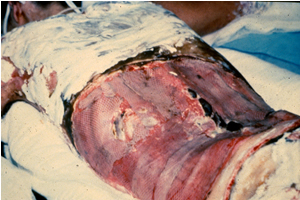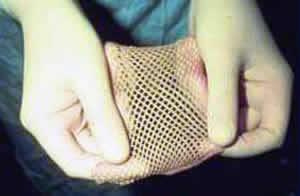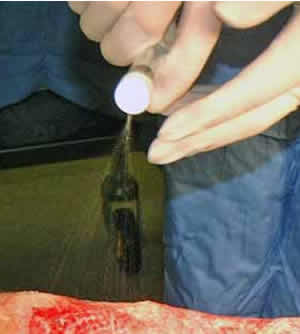Science of Conflict
Reconstructive surgery -skin grafts.



Read about the structure
of the skin then attempt the following questions.
Soldiers who have suffered severe burns to most of their skin will usually
die.
Define the following terms:
- first degree burn.
- third degree burn.
What symptoms would a soldier experience if he has suffered burns to
more than 60% of his body? Discuss this under the following headings:
- Heat loss;
- Infection;
- Water loss.
A third degree burn involves
damage to the epidermis and the dermis. The following actions are common
after such a burn. The patient is given:
- intravenous fluids containing electrolytes:
- antibiotics by intravenous or by mouth;
- antibiotic ointments or creams;
- a warm, humid environment for the burn;
- pain medications;
- skin grafting.
Why is skin grafting necessary for such a burn and why can the skin
not regenerate itself?
Why is it important for the patient to be given intravenous fluids?
Why are antibiotics given as an ointment as well as orally?
First and second degree burns involve damage to the epidermis and appear red with some blistering and are often painful. Why are the more severe third degree burns not as painful?